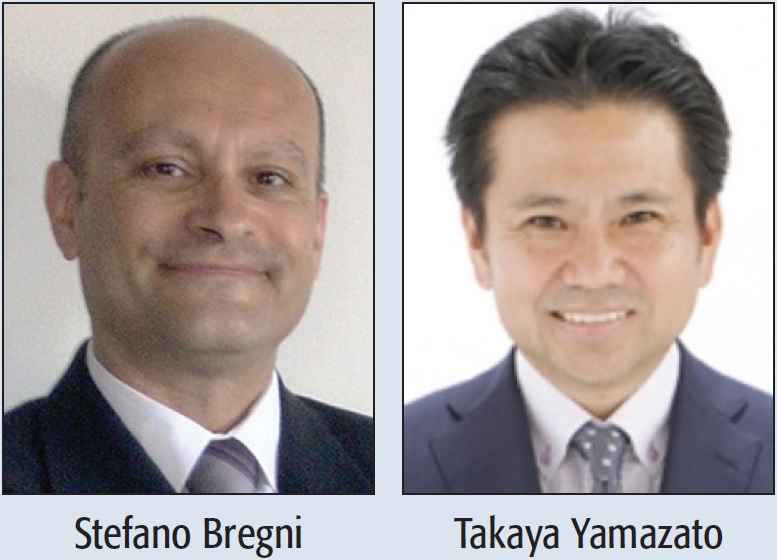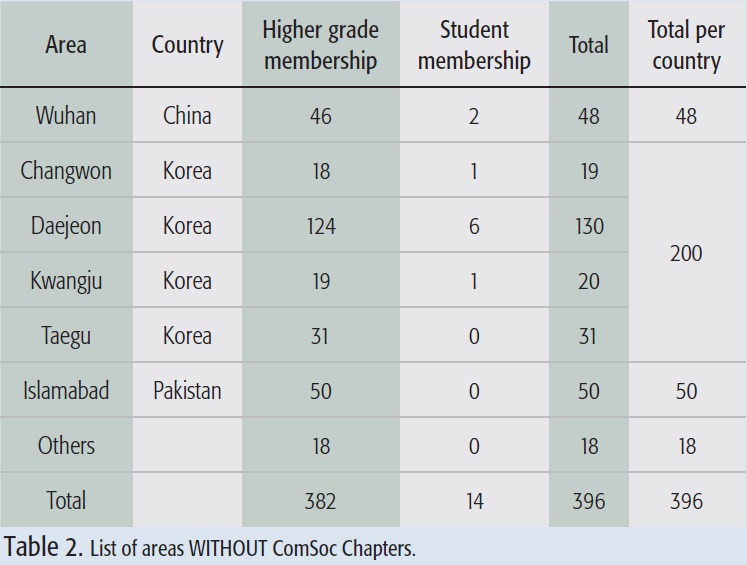
This is the fourth article in the series of eight, started in November 2016 and published monthly in the IEEE ComSoc Global Communications Newsletter, which covers all areas of IEEE ComSoc Member and Global Activities. In this series of articles, I am introducing the six MGA Directors (Sister and Related Societies; Membership Services; AP, NA, LA, EMEA Regions) and the two Chairs of the Women in Communications Engineering (WICE) and Young Professionals (YP) Standing Committees. In each article, one by one they present their sector activities and plans.
In this issue, I interview Takaya Yamazato, Director of the Asia/ Pacific Region (AP). Takaya is a professor at the Institute of Liberal Arts and Sciences, Nagoya University, Japan. He received the Ph.D. degree from Keio University, Yokohama, Japan, in 1993. From 1993 to 1998 he was an assistant professor in the Department of Information Electronics, Nagoya University, Japan. From 1997 to 1998 he was a visiting researcher in the Research Group for RF Communications, Department of Electrical Engineering and Information Technology, University of Kaiserslautern, Germany. In 2006 he received the IEEE Communication Society Best Tutorial Paper Award. He served as symposium co-chair of ICC 2009 and ICC 2011. From 2008 to 2010 he was the chair of the IEEE ComSoc Satellite and Space Communications Technical Committee and the editor-in-chief of the Japanese Section of IEICE Transactions on Communications. His research interests include visible light communication, intelligent transport systems, stochastic resonance, and open educational resources.
It is a pleasure for me to interview Takaya for this issue and offer him this opportunity to outline his current activities and plans as Director of the AP Region.
Bregni: Takaya, among all Regions, the AP Region is historically probably the one with the largest and most structured Board. Would you please introduce briefly the AP Region Board?
Yamazato: For over 20 years, the Asia/Pacific Board (APB) has been the premier network for ComSoc members in the Asia/ Pacific (AP) Region. Our mission is to address all ComSoc activities and programs pertaining to its members and Chapters in the A/P region. In the AP Board, we have 45 officers who work tirelessly to provide value to our members by offering exceptional services. APB has five committees, and three of our vice directors take the initiative on each committee activities.
Bregni: What are the activities and scope of those five APB Committees?
The Technical Affairs Committee (TAC), which is led by vice director Prof. Saewoong Bahk and TAC co-chairs Prof. Jianwei Huang and Prof. Takahiko Saba, is responsible for two of our awards, namely the Asia Pacific Young Researcher Award and the Asia Pacific Outstanding Paper Award. This year’s awardees were honored at our last APB general meeting held during Globecom2016.
The Information Services Committee (ISC), which is guided by vice director Dr. Sumei Sun and ISC co-chairs Prof. Yao-Win Peter Hong and Prof. Hung-Yun Hsieh, is responsible for our APB homepage and APB Newsletter. They launched a new homepage in September, and the page is nicely done. Please visit our homepage at http://apb.regions.comsoc.org. You will find information such as the list of awardees, APB Newsletters, our meeting slides, and more.
The Meeting & Conference Committee (MCC), which is also guided by vice director Sun and MCC chair Prof. Jiming Chen, promotes participation of the A/P region in ComSoc conferences and meetings. The MCC records conferences held in the A/P region.
The Membership Development Committee (MDC), which is led by vice director Prof. Wei Zhang and MDC co-chairs Associate Prof. Youngchul Sung and Prof. Meixia Tao, work jointly with the ComSoc chapters to promote ComSoc membership in academia and industry by better serving regional needs.
The Chapters Coordination Committee (CCC), which is also led by vice director Zhang and CCC co-chairs Prof. Eiji Oki and Prof. Miki Yamamoto, collaborates with the A/P Office to run the Distinguished Lecturer Tours (DLTs) and Distinguished Speaker Programs (DSPs). Prof. Oki is the DLT/DSP coordinator. At the time of this writing, 17 DLTs and seven DSPs have been organized. The CCC also collaborates with Sister Societies in the A/P region, and Prof. Yamamoto is in charge of the Sister Societies. Currently, we have eight Sister Societies in the A/P region.
Bregni: Now, would you give us a brief overview of the membership of the AP Region?
Yamazato: The number of ComSoc members in the A/P region is 7,733, representing 24.86% of the 31,112 ComSoc members (as of Dec. 2015). Unfortunately, the overall number of ComSoc members in the APB region decreased from 13,178 in Dec. 2014 to 7,733 in Dec. 2015. Among them, 7,430 are higher grade members (graduate students are included in higher grade members, who have voting rights) and 303 are simple student members (147 or 49.5% are from India).
Bregni: Such a decrease in ComSoc membership from 2014 to 2015 has been significant. Has this problem been particularly serious in the AP Region? Do you see any specific issue related to AP Region membership?
Yamazato: This is not just an issue in the AP Region, but also in other regions, as made evident by Table 1. Moreover, as student members are potential researchers, technologists, and educators in the communication field, we need to retain student members as higher grade members.

Another issue is that there are some members who do not belong to any chapter/council (see Table 2). There are 42 Chapters in the AP region and 396 members (corresponding to 5% of the total, from Korea, China, and Pakistan) who do not belong to any Chapter. We need to work on this issue by setting up new Chapters in Korea, China, and Pakistan.

Bregni: In 2016, the IEEE ComSoc Chapter-of-the-Year Award has been assigned to a Chapter of the AP Region: Malaysia. Would you please highlight the Malaysia Chapter and its achievements in 2016?
Yamazato: The Malaysia Chapter won the IEEE ComSoc Chapter- of-the-Year Award for the second time in three years, after 2014! This is a great accomplishment, because all the ComSoc chapters worldwide are considered for this Award. The Malaysia Chapter has also been chosen as the winner of the AP Region Chapter Achievement Award in 2014 and 2016.
As the Director of the AP region, I examined questionnaires of 19 Chapters, reporting their activities in the previous year. Among those, the activities of the Malaysia Chapter were deemed excellent. They held 10 membership development seminars, 24 educational or public relations programs and student activity meetings, 12 activities for young and student members, and 13 activities that involved the local communications industry. Furthermore, they organized nine full day/ half day seminars, symposia or conferences, hosted four DLT series with a total of nine talks and two DSPs, and conducted 31 technical meetings. What an accomplishment! Outstanding! The Malaysia Chapter makes us really proud.
In 2016, moreover, they planned to conduct 15 membership development programs and four paper awards: Best Paper Award, Best Ph.D. Thesis Award, Best MSc/MEng Thesis Award, and Best Undergraduate Final Year Project Award. We all know the success of ICC 2016 in Kuala Lumpur. The officers and many volunteers of the Malaysia Chapter worked tirelessly, in tight cooperation with the international Organizing Committee, to provide value to the participants by offering exceptional services.
I invited the Malaysia Chapter Chair, Prof. Fazirulhisyam Hashim, to give us a talk at our AP Board general meeting held at GLOBECOM 2016, Washington, DC, USA. I asked Prof. Hashim to enlighten us about the secret of their success and he said “learning from the best practice.” He searches the homepages of other Chapters for activities that are worth doing, and he tries to organize them in their chapter as well.
Bregni: The next AP Regional Chapter Chair Congress is planned in 2017, co-located with IEEE GLOBECOM 2017 in Singapore. At that meeting, it will certainly be fruitful to share the experience of the Malaysia Chapter with all Chapters.
Yamazato: Yes, absolutely. We are planning to hold the 2017 AP Regional Chapter Chair Congress in coordination with the IEEE ComSoc Sister and Related Societies Summit, which is also planned to be co-located with IEEE GLOBECOM 2017 in Singapore. It will be a two-day event just before the conference. We will announce a “call for topics” to all AP chapters and coordinate interesting sessions for Chapter support and membership development. The presentation of the Malaysia Chapter will certainly be one of the highlights of the Congress.
Bregni: To conclude, is it possible to join the AP Board and collaborate on some of its activities?
Yamazato: The AP Board is open to any IEEE ComSoc member from the AP region. Please attend our APB meeting, which is usually held on the first day of the Technical Sessions of GLOBECOM/ ICC. I hope that as many of our members as possible will get involved and serve on one of our Committees, as the best networking often occurs when you are working toward a common goal.